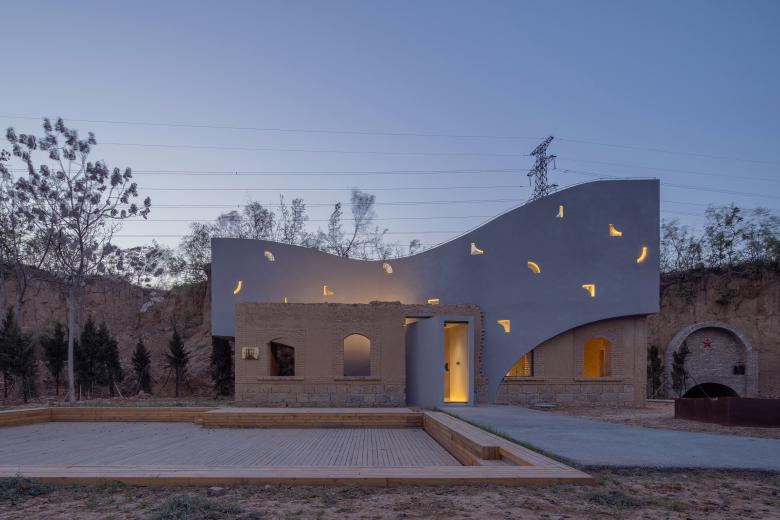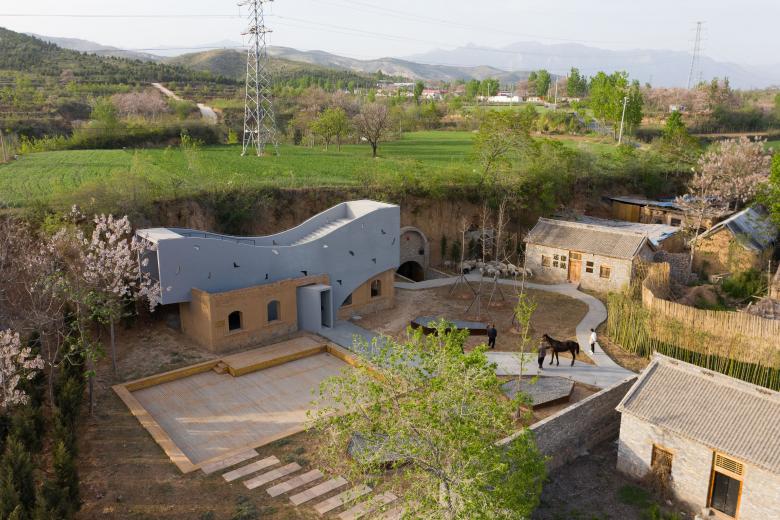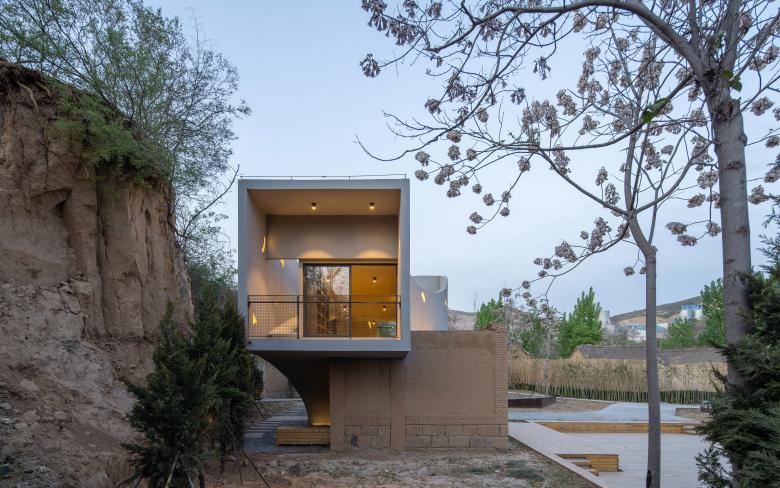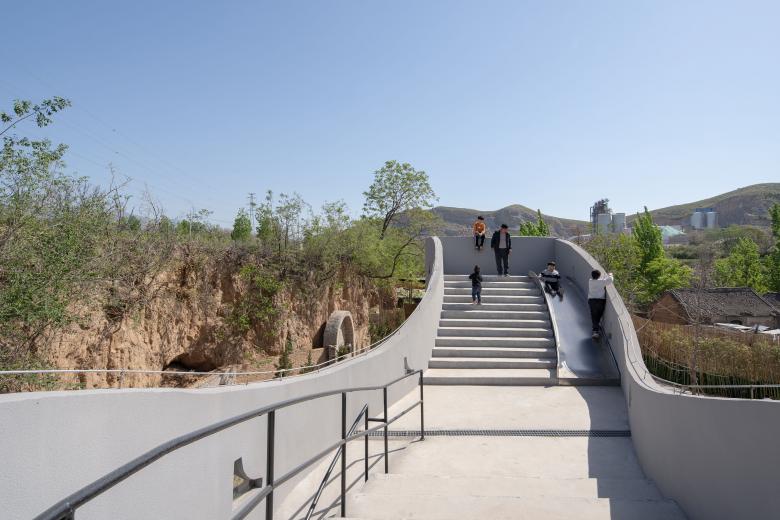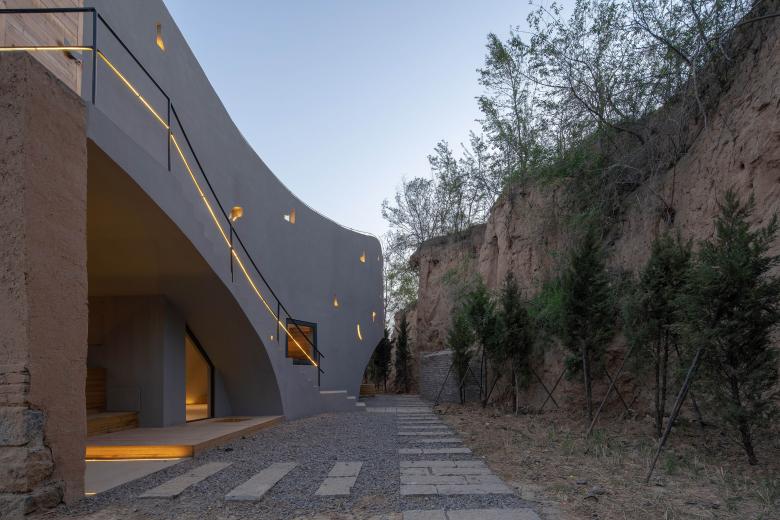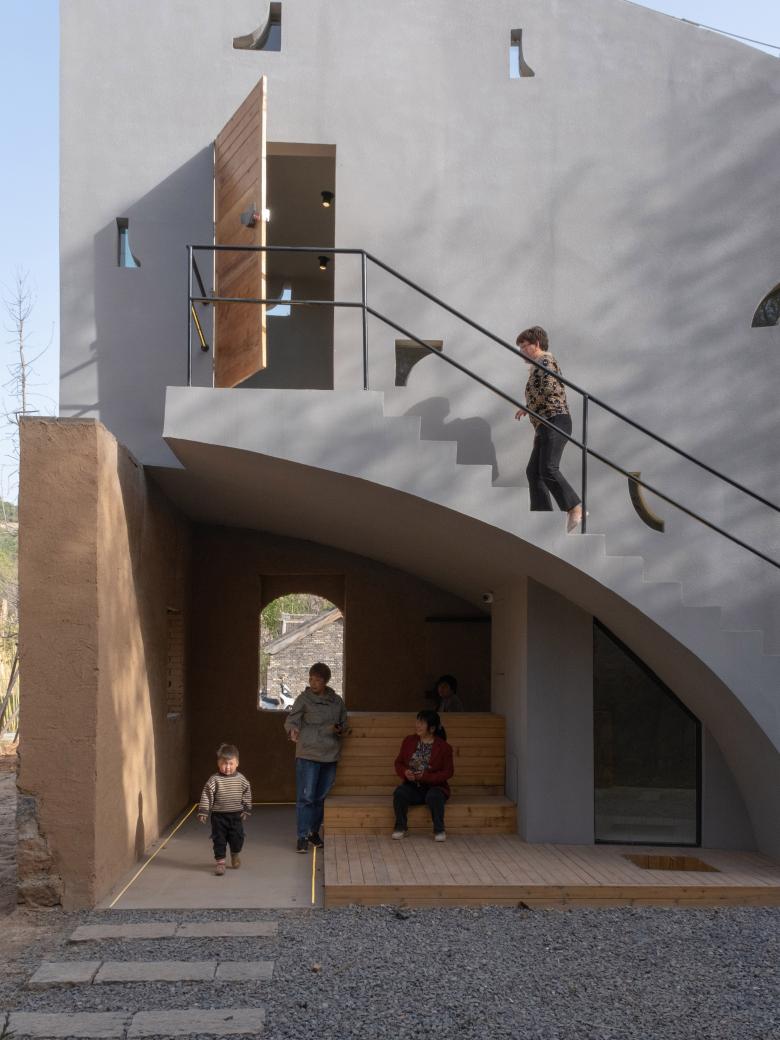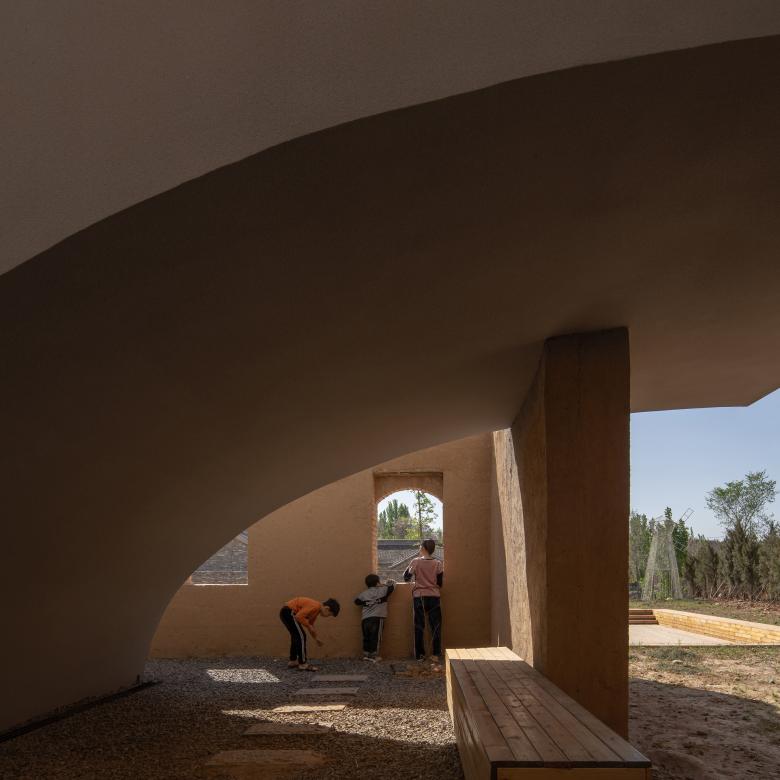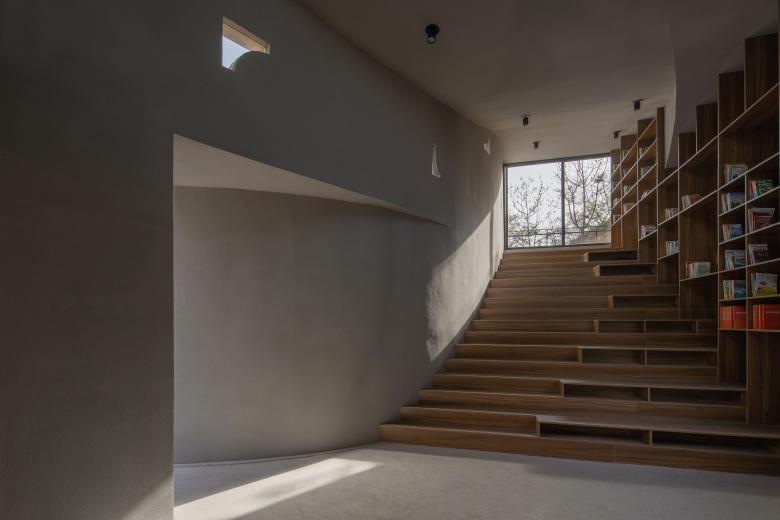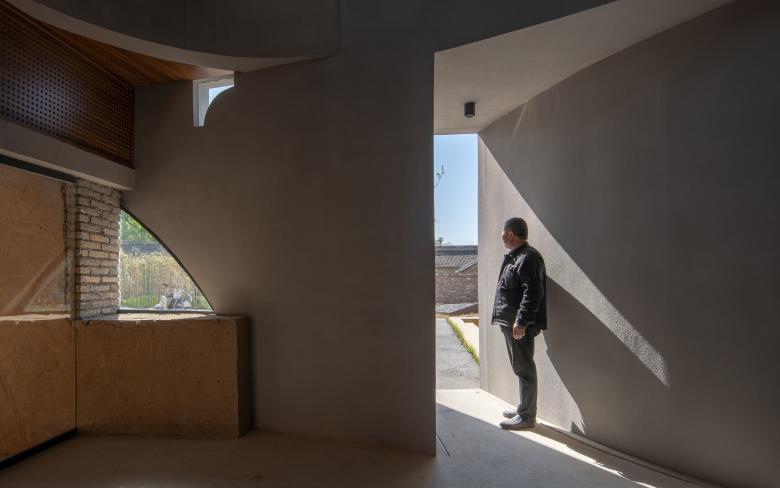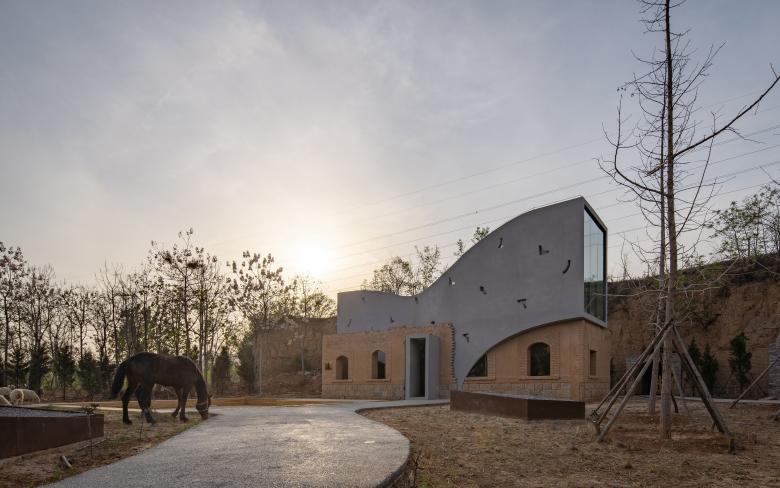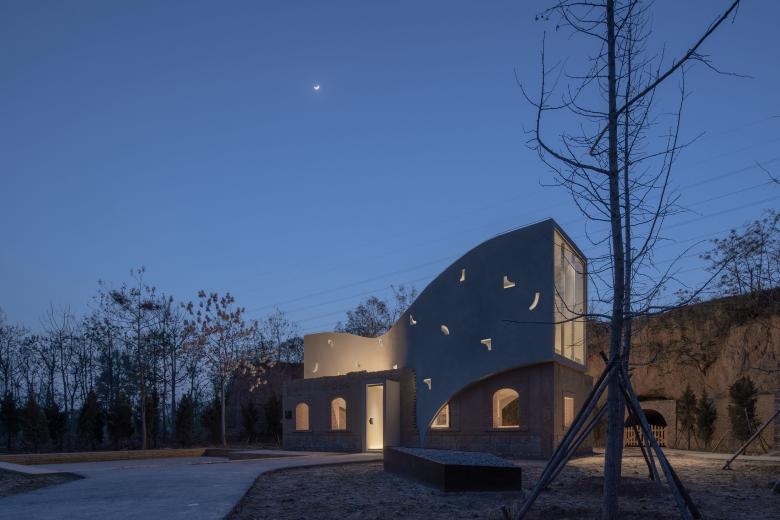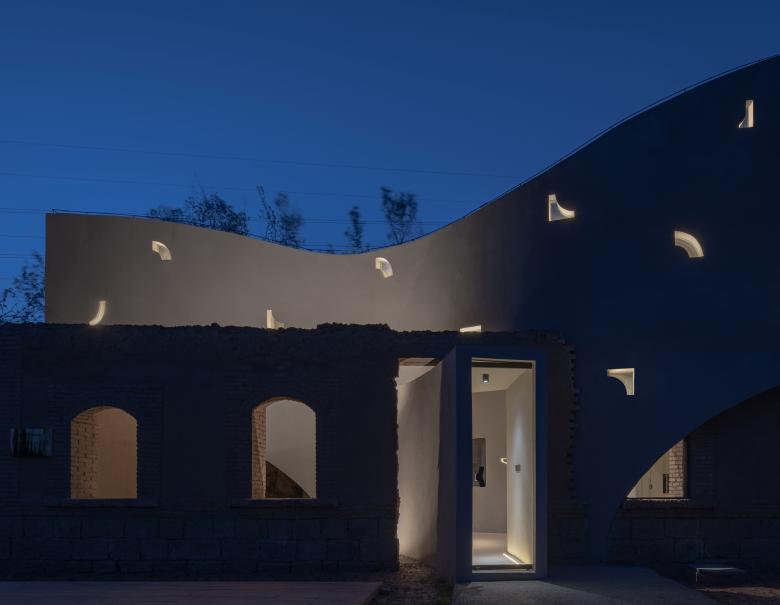Library in Ruins
Jiaozuo, China
- 建築家
- Atelier XI
- 場所
- Xiuwu County, Jiaozuo, China
- 年
- 2020
- クライエント
- Xiuwu County
- Lead Architect 主持建筑师
- Chen Xi
- Design Team 设计团队
- Zhu Jing, Tian Di, Huang Jiajie, Wang Xingyao, Xu Lvbao, Wang Weiguo, Wen Weijian (Intern) , Cao Suying (Intern)
- Lighting Consultant 灯光顾问
- AURA Lighting Design Consultant
- Construction Documents 施工图设计
- Li Jianhui (architecture), Su Zhimeng, Huang Xiaolong (structure), Gan Bin, Xiao Liangmin (MEP)
- Size
- 66m2
In the beginning, the architect received the original commission to design a 300-square-meter public building for facilitating the county’s culture and art education in Xiuwu, Henan. However, considering the vast serving area (630-square-kilometer county area) and the difficulty of traveling between scattered villages, the architect came up with a proposal to divide one building into a series of miniature facilities in different locations so as to better serve local communities.
These cast-in-place concrete miniatures are interpreted into a series of tree-shaped spaces with tentacles reaching out for the sky, bathing in light and shadow. Their locations vary from fields, woods, to mountaintops, and their forms differ as well: while one grows out from the ruined walls in an abandoned village, another embodies a floating theater on the water.
Following the first completed "Peach Hut", the second episode of the miniature series, "Library in Ruins", is constructed alongside the remnant of an adobe house in Sunyao Old Village which is 20 kilometers away from the Peach Hut.
Sunyao Old Village is located in a mountainous area far away from the town center. Since 1996, villagers have moved into the brick-concrete houses in the new village next door one after another, leaving behind many aged adobe houses and cave dwellings. Years have passed, and when the abandoned village was examined by the architect, its surrounding undulating mountains, the barren cliffs adjacent to the site, and the vast fields above the cliffs all manifested rich topographical relationships that would evoke design inspirations.
At first, the village asked the architect whether it was possible to build inside the plot of the original house where only a part of ruined adobe walls was left. However, after searching for nearby craftsmen, villagers were no longer able to find any craftsman who could build with the original rammed earth technique. Therefore, the architect proposed to build with a new method to allow a new structure to grow from the old ruins: allowing the new building to become a spatial device where people enter the ruins, jump over the old houses, and gaze into the village, the fields, and the mountains in the distance.
Furthermore, the architect hopes to present a duet of intertwined memories in this building: On the one hand, it connects cave dwellings, barren hills, and earth walls– physical remains with heavy texture and traces of time; On the other hand, it continues the formal languages of the miniature series while conforming to the context of the site to become a sculptural space that grows from the terrain. The two sets of memories spatially intersect each other: A concrete entrance protrudes out at the location of the original doorway on the remnant wall to invite people in; After entering the building, a corner of the remnant wall extends into the room, guiding people to explore the cave dwellings and the barren cliff in the rear garden; The traditional-style wooden doors are installed on the rear facade, continuously reminding visitors of the dialogues between the new space and the existing remnants.
The facade and internal spaces of the building are unfolded in a topographic approach. The undulating outline of the roof echoes the terrain and distant mountains, and the roof ground naturally forms an outdoor terrace and a slide for children. The section curvature that jumps over the old walls links the first-floor entrance, the terrace, and the rooftop. The interior space functions not only as a stepped library, but also as a small projection room. The meandering plan of the building and the network of paths become an extension of the surrounding maze-like cave system.
The library is embraced in the open arms of the village buildings and trees. On the east and west facades of the building, large curtain windows are designed to greet the idyllic, leafy surroundings. The architect hopes to bring new energy to the silent village with interesting geometries and lighting. Many small special-shaped windows are cast with in-situ concrete on the north and south facades to echo the forms of buildings in the miniature series. These irregularly shaped openings curate a play of shadow during the day, and create a backdrop of twinkling lights throughout the night.
After the library was completed in September 2020, nearby villagers and children often come here to read and play. It also attracts many tourists from neighboring counties and cities to the village. The small plaza in front of the building entrance regularly hosts community activities such as villagers' meetings and festivals. It was used as a sub-venue for the National Rural Revival Forum in the fall of 2020 to welcome rural revitalization practitioners from all over the country. At the same time, Sunyao Old Village attracted webcasting companies from Shanghai and Zhengzhou to come and renovate old houses as home-stay hotels, and they used webcasting platform to help the old village connect to the outside world.
関連したプロジェクト
Magazine
-
2024, The Year in …
5 day ago
-
Raising the (White) Bar
6 day ago
-
Architects Building Laws
1 week ago
